
Robert McDowell Parker Jr. is a retired U.S. wine critic. His wine ratings on a 100-point scale and his newsletter The Wine Advocate are influential in American wine buying and are therefore a major factor in setting the prices for newly released Bordeaux wines. This made him the most widely known and influential wine critic in the world.

Wine Spectator is an American lifestyle magazine that focuses on wine and wine culture, and gives out ratings to certain types of wine. It publishes 15 issues per year with content that includes news, articles, profiles, and general entertainment pieces. Each issue also includes from 400 to more than 1,000 wine reviews, which consist of wine ratings and tasting notes. The publication also awards its 100 chosen top wineries each year with the Winery of the Year Awards.
The Paris Wine Tasting of 1976, also known as the Judgment of Paris, was a wine competition organized in Paris on 24 May 1976 by Steven Spurrier, a British wine merchant and his colleague, Patricia Gallagher, in which French judges carried out two blind tasting comparisons: one of top-quality Chardonnays and another of red wines. A Napa wine rated best in each category, which caused surprise as France was generally regarded as being the foremost producer of the world's best wines. Spurrier sold only French wine and believed that the California wines would not win.
Blinded wine tasting is wine tasting undertaken in circumstances in which the tasters are kept unaware of the wines' identities. The blind approach is routine for wine professionals who wish to ensure impartiality in the judgment of the quality of wine during wine competitions or in the evaluation of a sommelier for professional certification. More recently wine scientists have used blinded tastings to explore the objective parameters of the human olfactory system as they apply to the ability of wine drinkers to identify and characterize the extraordinary variety of compounds that contribute to a wine’s aroma. Similarly, economists testing hypotheses relating to the wine market have used the technique in their research. Some blinded trials among wine consumers have indicated that people can find nothing in a wine's aroma or taste to distinguish between ordinary and pricey brands. Academic research on blinded wine tastings have also cast doubt on the ability of professional tasters to judge wines consistently.
Pierre Brejoux was Inspector General of the Appellation d'Origine Controlee Board, which controls the production of top French wines. he served as an expert wine taster in the Paris Wine Tasting of 1976. In the blind tasting, California wines won both the red and white wine categories. After the tasting, there were many calls for him to resign his position as Inspector General because so many people and groups were highly displeased with the results. He later revealed to George Taber that he traveled to California in 1974 and 'learned a lot - to my surprise...'. Brejoux also authored several books on French wine.
Christian Vannequé was a French sommelier and restaurateur.
A wine competition is an organized event in which trained judges or consumers competitively rate different vintages, categories, and/or brands of wine. Wine competitions generally use blind tasting of wine to prevent bias by the judges.

The Great Chardonnay Showdown, held in the spring of 1980, was organized by Craig Goldwyn, the wine columnist for the Chicago Tribune and the founder of the Beverage Testing Institute, with help from three Chicago wine stores. A total of 221 Chardonnays from around the world were selected for the blind wine competition. France and California were heavily represented, but entries from many countries around the world were included.
George McCaffrey Taber is a journalist and entrepreneur.

The production of wine in New Jersey has increased significantly in the last thirty years with the opening of new wineries. Beginning in 1981, the state legislature relaxed Prohibition-era restrictions and crafted new laws to facilitate the growth of the industry and provide new opportunities for winery licenses. Today, New Jersey wineries are crafting wines that have earned recognition for their quality from critics, industry leaders, and in national and international competitions. As of 2019, New Jersey currently has 51 licensed and operating wineries with several more prospective wineries in various stages of development.
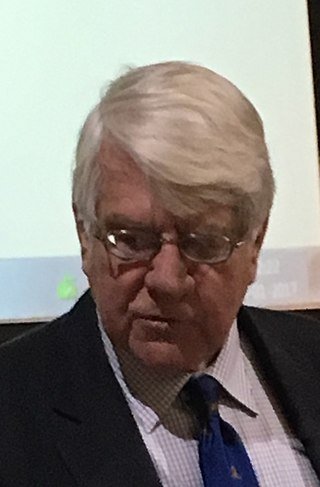
Orley Clark Ashenfelter is an American economist and the Joseph Douglas Green 1895 Professor of Economics at Princeton University. His areas of specialization include labor economics, econometrics, and law and economics. He was influential in contributing to the applied turn in economics.
Richard Emeric Quandt is a Guggenheim Fellowship-winning economist who analyzed the results of the Judgment of Paris wine tasting event with Orley Ashenfelter.

Wine tasting is the sensory examination and evaluation of wine. While the practice of wine tasting is as ancient as its production, a more formalized methodology has slowly become established from the 14th century onward. Modern, professional wine tasters use a constantly evolving specialized terminology which is used to describe the range of perceived flavors, aromas and general characteristics of a wine. More informal, recreational tasting may use similar terminology, usually involving a much less analytical process for a more general, personal appreciation.
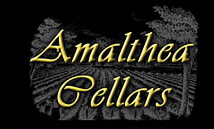
Amalthea Cellars is a winery in the West Atco section of Winslow in Camden County, New Jersey. The vineyard was first planted in 1976, and opened to the public in 1981. Amalthea has 10 acres of grapes under cultivation, and produces 5,000 cases of wine per year. The winery is named after Amalthea, a moon of Jupiter, reflecting the owner's scientific background and love of mythology.
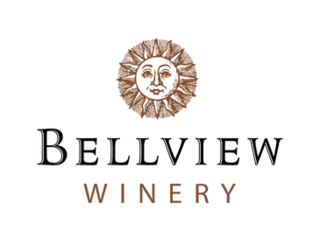
Bellview Winery is a winery in the Landisville section of Buena in Atlantic County, New Jersey. A family produce farm since 1914, the vineyard was first planted in 2000, and opened to the public in 2001. Bellview has 40 acres of grapes under cultivation, and produces 8,000 cases of wine per year. The farm was named by the great-grandfather of the current owner, and is of Italian origin.
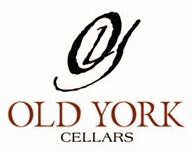
Old York Cellars is a winery in the Ringoes section of East Amwell in Hunterdon County, New Jersey. Originally owned and established by the Fishers of Ringoes, the winery was purchased by David Wolin in 2008 and opened to the public in 2010. Old York Cellars has 12 acres of grapes under cultivation, and produces an estimated 3,600 cases of wine per year. The winery is named for the road where it is located.

Ventimiglia Vineyard is a winery in Wantage Township in Sussex County, New Jersey. The vineyard was first planted in 2002, and opened to the public in 2008. Ventimiglia has 5 acres of grapes under cultivation, and produces 1,000 cases of wine per year. The winery is named after the family that owns it.
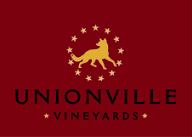
Unionville Vineyard is a winery in the Unionville section of East Amwell in Hunterdon County, New Jersey. Originally part of the largest peach orchard in the United States, the vineyard was first planted in 1988, and opened to the public in 1993. Unionville has 41 acres of grapes under cultivation, and produces 4,500 cases of wine per year. The winery is named for a former village near where the farm is located.

Tomasello Winery is a winery located in Hammonton in Atlantic County, New Jersey. Tomasello is the second-oldest active winery in the state, after Renault Winery. The vineyard was first planted in 1888, and opened to the public in 1933 after the end of Prohibition. Tomasello is one of the largest winegrowers in New Jersey, having 70 acres of grapes under cultivation, and producing 65,000 cases of wine per year. Although the winery is in Hammonton, most of the grapes are grown on three vineyards in the neighboring Winslow Township in Camden County. The winery is named after the family that owns it.
The American Association of Wine Economists (AAWE) is a non-profit, educational organization based in New York City.











